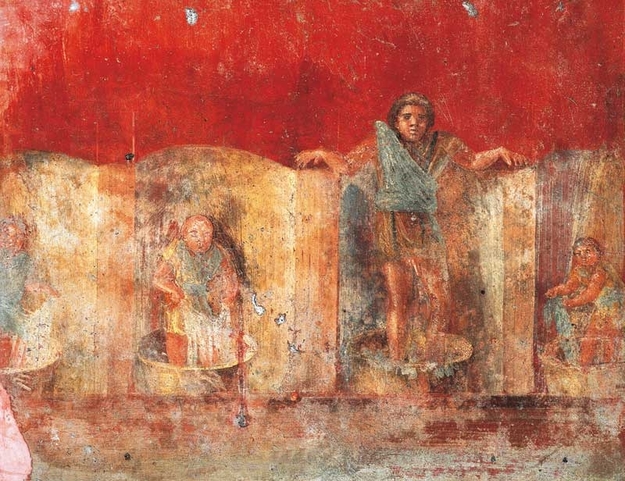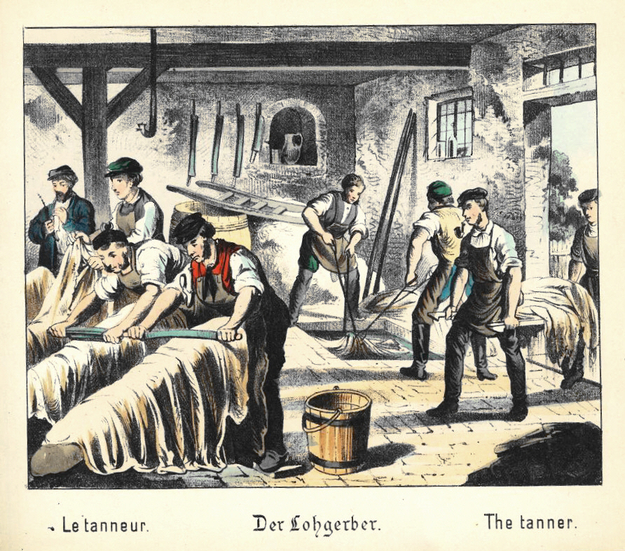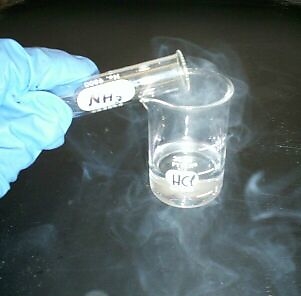It might not be surprising for the advocates of urinotherapy, but our pee has been used for centuries as a cleanser. The Romans not only brushed their teeth with it, but regarded it as an effective laundry soap. In order to wash the tunics, pee was collected on the street by means of vessels that were carried away as soon as they had been filled up by the urine of passers-by. Specific workers called fullones (fullers, washers) had the task to stomp (always with bare feet, of course) on clothes placed in tubs full of water and old urine.
Dyeing wool cloth - Image taken from British Library Royal MS 15.E.iii, f. 269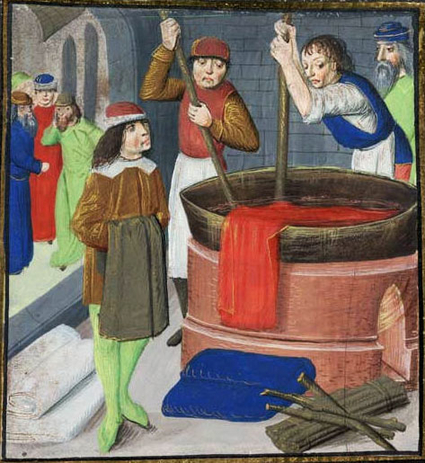
Do you wonder how this work? Well, urine contains urea, a nitrogen-based organic compound. If stored, over time it decays into ammonia. This has a high pH and is a caustic, yet weak base when added to water. Therefore, it serves to break down organic material, neutralise dirt and grease, produce cleaning foam and help disinfect fabrics. Tellingly enough, most of the household cleansers we use nowadays do actually contain it.
Ammonia was also helpful in keeping the clothes white and soft and make the colours brighter. Oh yes, stale urine can work both as an extracting agent and as a mordant too, that is it serves to bind dyes to a cloth. In the first case (pee as extracting agent), soaking certain natural substances in stale urine provides fine pigmentation, which is useable to dye wool and cotton. Let's say you want to get purple: then let lichen orchil ferment in old pee and you'll have the desired colouration.
Roman fullers - Mosaic now to be seen at the National Museum in Neaples (IT)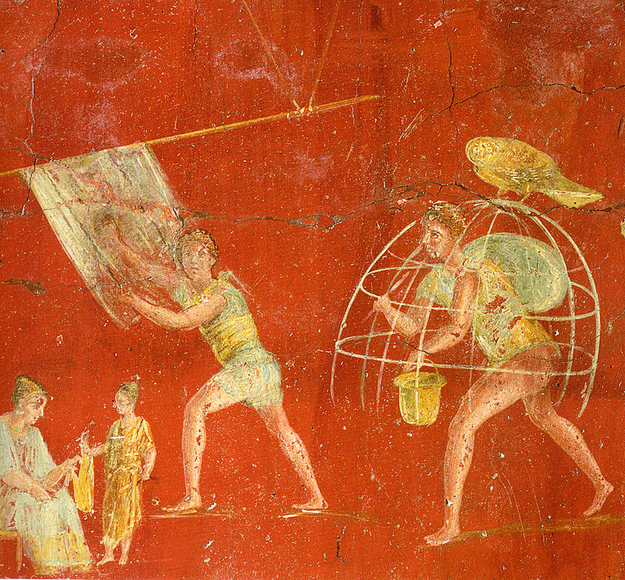
In the second case (pee as mordant), dye molecules (called chromophores) become part of a more complex web of molecules so that the central nugget of dye is visible, but protected by the wider group and doesn't easily bleed away.
Urine doesn't only work well for wool, it can also do magic for tanning leather. Indeed, the ancients used pee to remove hair and flesh from animal hides and to soften them. Two ways were possible: one could either tinkle on the hardest parts or soak the entire hide in a vat full of the golden liquid. After that, skins were also often treated with dung to make them even suppler. It is no wonder that ancient tanneries were typically relegated to the outskirts of a town, being tremendously odiferous due to the combination of urine, faeces, and decaying flesh.
It is a fact that we tend to be disgusted by urine and get rid of it straight away. However, in the past it was regarded as such a valuable material that the Latin emperor Vespasian imposed a tax on the commercial distribution of urine from public urinals. All buyers of pee (mainly tanners and launderers) had to pay money in exchange for the precious resource. The Urine Tax ensured Vespasian's permanence in popular memory in at least two ways:
1. in Italy, France and Romania urinals are sometimes still named after him. Now that you know what vespasiani, vespasiennes or vespasiene refer to, you can use this historical information to play cool with your friends.
2. Pecunia non olet, or “money doesn't stink”: according to historical accounts, Vespasian used this witty expression to shush those who complained about the smelly nature of the tax; in other words, the value of money is not spoilt by its origins. Some authors found the comment so good that they quoted it in own works. If you happen to have a copy of Martin Amis' London Fields in your hands, see if you find Vespasian's maxim – this text doesn't contain spoilers and a literary treasure hunt may prove fun.
In any case, given that ammonia is a chemical component that can be dangerous for your lungs, we would not recommend to turn your house in a fullery and/or tannery. And if you are expert enough to do it safely, keep in mind that modern nostrils might not be ready to bear your smell.
